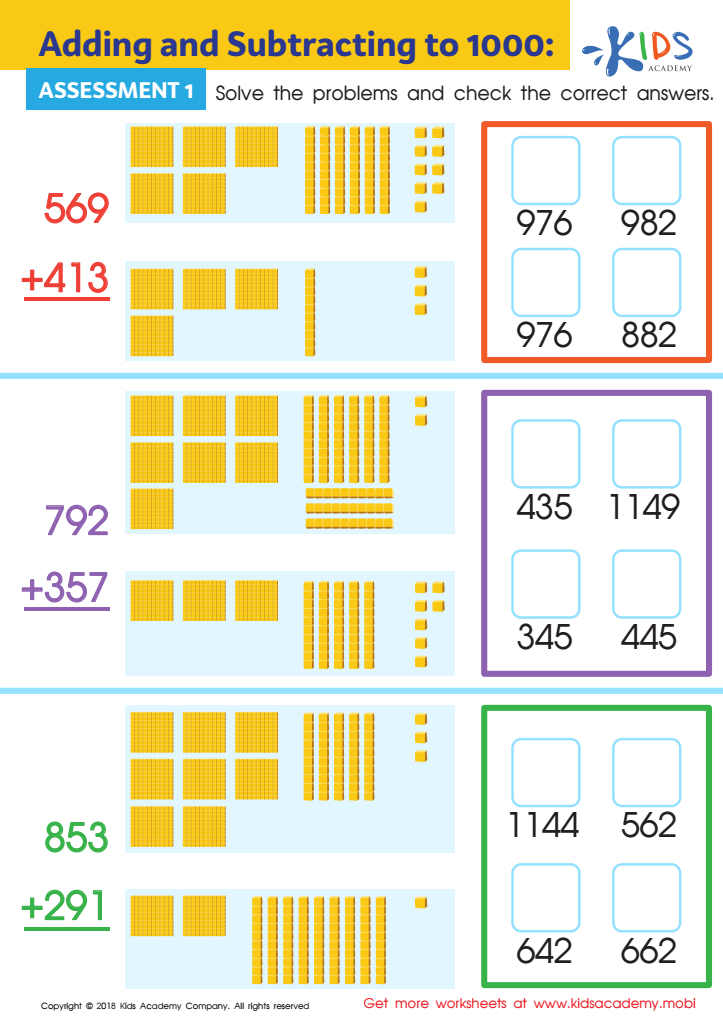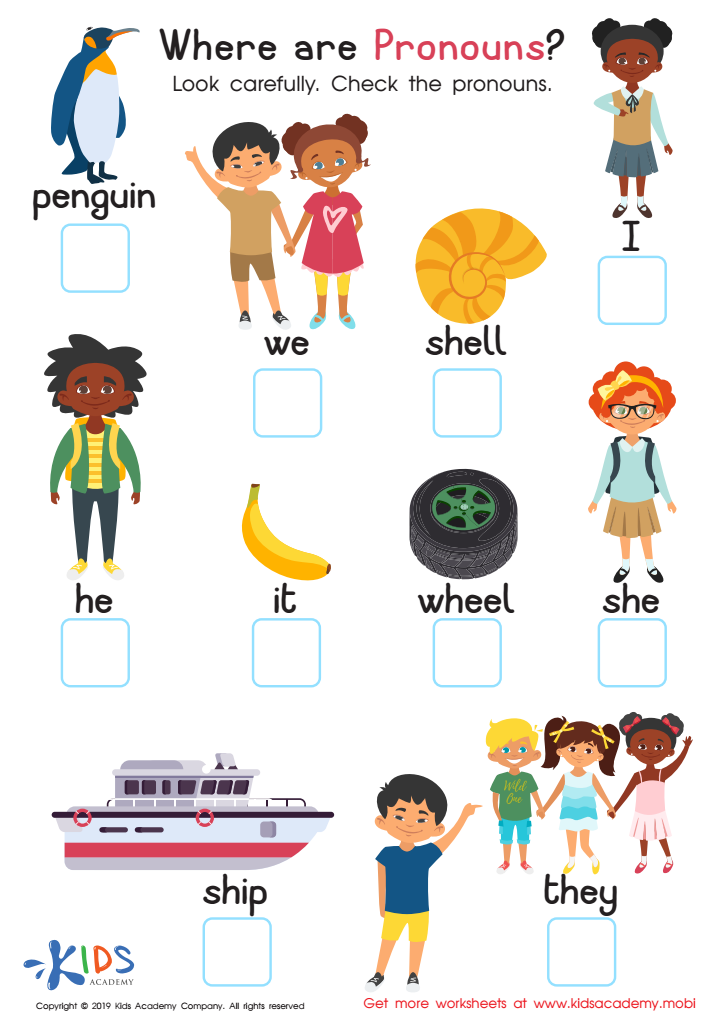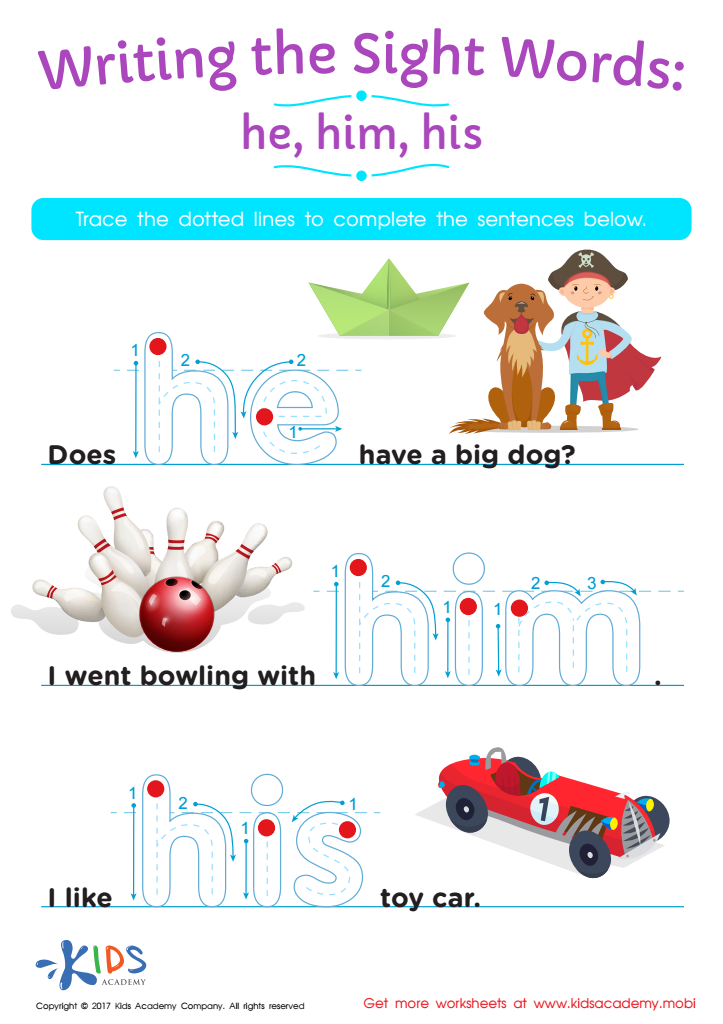Pronoun identification Worksheets for Kids
4 filtered results
-
From - To


Replacing Nouns with Pronouns Worksheet


Adding and Subtracting to 1 Worksheet: Assessment 1


Where Are Pronouns? Worksheet


He, Him, His Printable Sight Words Worksheet
Question/Answer
How does the mastery of the Pronoun identification skill affect a student's performance at an early age?
The mastery of pronoun identification at an early age significantly enhances a student's reading comprehension and writing clarity. This foundational skill aids in understanding sentence structure and relationships between subjects and objects, improving overall language proficiency. It also fosters better communication skills, as students can more accurately express themselves and understand others, thereby positively impacting their academic performance.
What are some effective activities to train students’ Pronoun identification skill when teaching them about Grammar?
Effective activities for teaching students pronoun identification include: interactive matching games where they match pronouns to their antecedents; fill-in-the-blank exercises focusing on pronoun usage; rewriting sentences to change pronoun perspective (e.g., from first to third person); circle-the-pronoun worksheets; and creating sentences from pictures using appropriate pronouns. Role-play activities where students converse using specific pronouns can also reinforce learning.
How to test a Grade 3 student’s Pronoun identification skills?
To test a Grade 3 student's pronoun identification skills, provide sentences with various pronouns (he, she, it, they, we, etc.) and ask the student to underline or highlight each pronoun. Also, include fill-in-the-blank sentences where students must choose the correct pronoun to complete the sentence, ensuring to cover subjective, objective, possessive, and reflexive pronouns to assess comprehensive understanding.

 Assign to the classroom
Assign to the classroom












